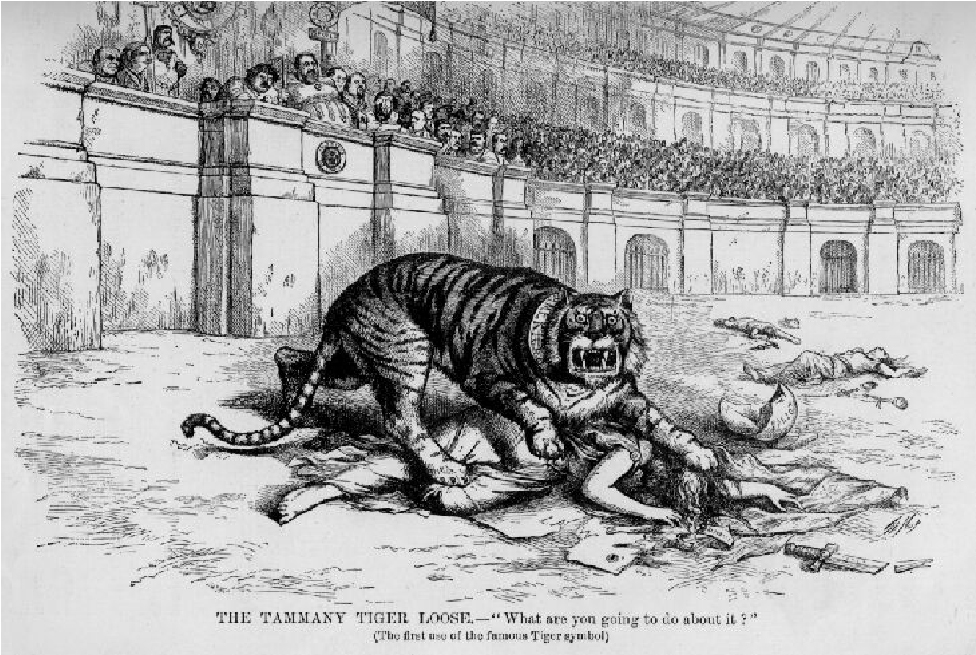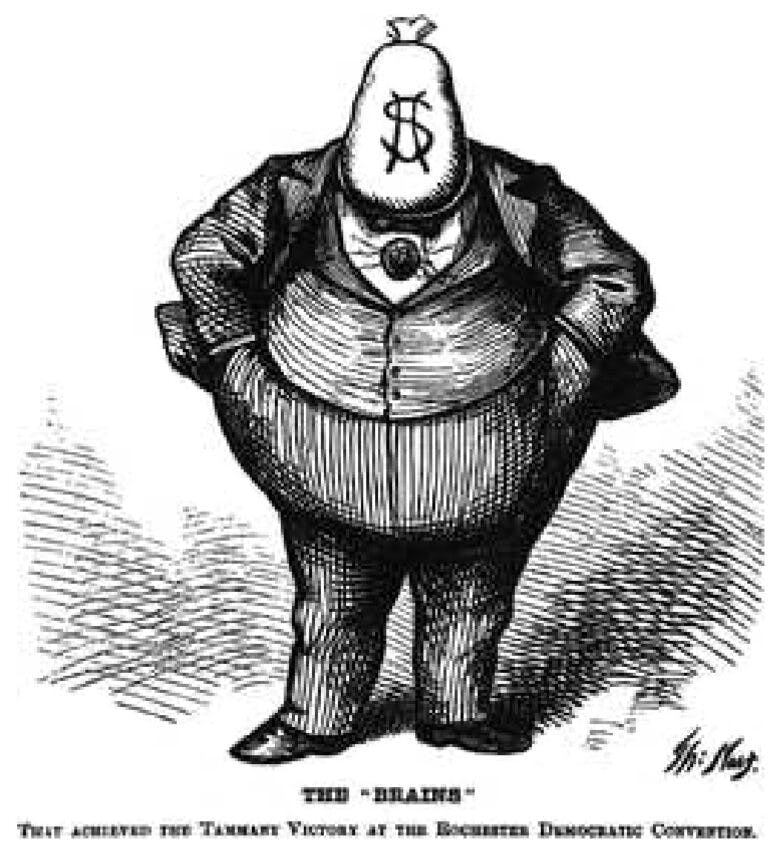Cartoon Analysis: Thomas Nast Takes on “Boss” Tweed, 1871
Use this primary source imagery to analyze major events in history.
Suggested Sequencing
- Use this Primary Source with the William “Boss” Tweed and Political Machines Narrative and the Were Urban Bosses Essential Service Providers or Corrupt Politicians? Point-Counterpoint to give a full picture of political machines and their relationship with immigrants.
Introduction
From an early age, William “Boss” Tweed discovered he had a knack for politics. His political career began in 1850, when he ran as an alderman from the Seventh Ward of New York City. He served a frustrating term in Congress during the divisive sectional tensions of the 1850s and then happily returned to local politics, where he believed the action was. He quickly became one of the leading, and most corrupt, politicians in New York City. Tweed and his cronies in Tammany Hall—the organization that controlled the Democratic Party and most of its votes—directed local services, controlled elections, and received millions of dollars in kickbacks, bribes, and other forms of brazen corruption.
Tweed’s greed drew the attention of Thomas Nast, a cartoonist for the periodical Harper’s Weekly. Nast’s cartoons drew attention to Tweed and his many illegal activities. Tweed feared Nast’s cartoons to a much greater extent than newspaper articles, because many of his constituents were illiterate, and he even offered Nast a bribe to stop these public criticisms. Tweed was right to fear this criticism because Nast’s cartoons helped lead to his downfall and arrest in 1876. Tweed died in jail in 1878, and Nast continued to draw for Harper’s Weekly until 1886.
Sourcing Questions
- Who was the artist of these political cartoons?
- What was the artist’s goal in creating these cartoons?
- Why did Boss Tweed fear these cartoons?

Figure 1: The caption of the cartoon reads: “Boss Tweed: ‘As long as I count the votes, what are you going to do about it? Say?’”

Figure 2: The cartoon caption reads: “The ‘Brains’ that achieved the Tammany victory at the Rochester Democratic Convention.”

Figure 3: The cartoon caption reads: “The Tammany Tiger Loose—‘What are you going to do about it?’” Before being knocked to the ground by the tiger, the woman had been wearing a crown labeled “republic” and carrying a sword labeled “power”; she lies on top of a paper labeled “law” and a battered flag.
Comprehension Questions
- (Figure 1) (Figure 2) (Figure 3) How do these cartoons demonstrate that Boss Tweed had an unfair grip over politics in New York? Use specific examples from the cartoons to support your answer.
- (Figure 1) (Figure 2) (Figure 3) Which cartoon do you feel is most effective? Explain.
Historical Reasoning Questions
- According to Thomas Nast’s portrayal, what threat did Boss Tweed represent to constitutional principles and a healthy civil society?
- What is the role of a free press in questioning governmental actions in a constitutional republic?
- Do you think political cartoons play the same role in questioning government today as they did in Thomas Nast’s time? Explain.
1: In Counting there is Courage: https://en.wikipedia.org/wiki/William_M._Tweed#/media/File:Boss_Tweed,_Nast.jpg
2: “The Brains”: https://commons.wikimedia.org/wiki/File:Boss_Tweed,_Thomas_Nast.jpg
3: “Tammany Tiger Loose”: https://en.wikipedia.org/wiki/Thomas_Nast#/media/File:Nast-Tammany.jpg
